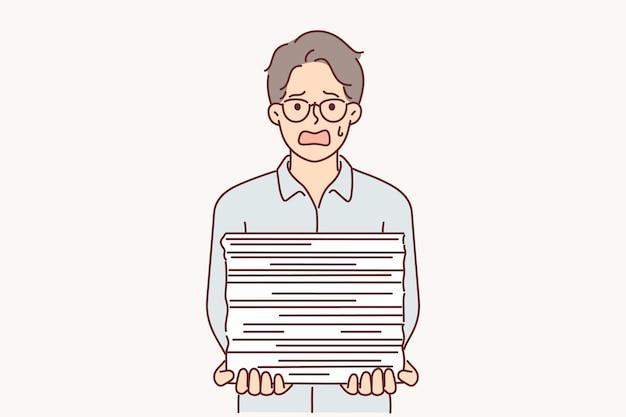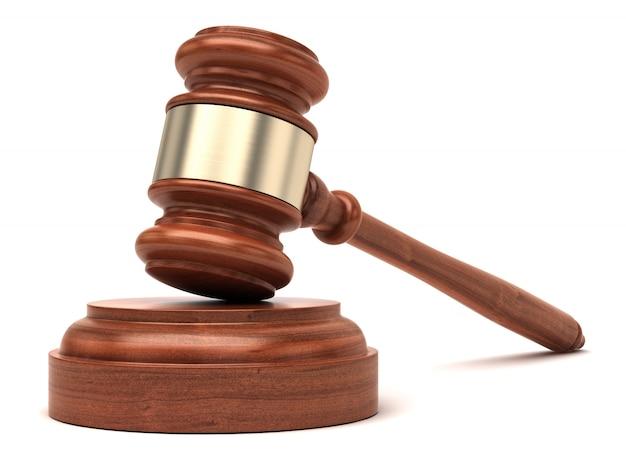Whether you’re a seller or a buyer on Amazon, it’s essential to understand the potential legal issues involving patents. Amazon boasts a vast selection of products, but with that comes the risk of unwittingly infringing on someone else’s intellectual property.
If you’re curious about Amazon’s own patent portfolio, you might be surprised to learn that the company holds thousands of patents covering everything from drone delivery to voice-activated assistants. But what happens when a third party accuses you of infringing on their patent?
Amazon has its own intellectual property policy in place, which outlines how the company deals with claims of patent infringement, design patent infringement, copyright infringement, and trademark infringement. It’s crucial to familiarize yourself with these policies to protect your Amazon account and business.
If you receive a notice of patent infringement or any other infringement claim from Amazon, it’s wise to respond promptly and professionally. Ignoring the message will likely result in severe consequences, such as a listing suspension, account deactivation, or even legal action.
In this blog post, we’ll dive deeper into the topic of patent infringement on Amazon, discussing the types of patents Amazon holds, the potential consequences of infringement, and how to respond to infringement claims professionally. We’ll also examine what happens when you sell a patented product on Amazon and how to remove copyright infringement on Amazon. Stay tuned!
Patent Infringement on Amazon
If you’re an Amazon seller, you’re aware of the importance of protecting your intellectual property. However, despite your best efforts, you may find yourself dealing with a patent infringement claim on Amazon.
What is Patent Infringement
Patent infringement is the unauthorized use of a patented product, process, or design without the permission of the patent holder. As an Amazon seller, you are responsible for ensuring that the products you sell on the platform do not infringe on the intellectual property rights of others.
How to Avoid Patent Infringement on Amazon
The best way to avoid patent infringement on Amazon is by conducting thorough research before listing your products on the platform. You can use resources such as the United States Patent and Trademark Office (USPTO) or professional services to ensure your product is original and not infringing on any existing patents.
Another way to avoid patent infringement on Amazon is by obtaining legal protection for your intellectual property. Applying for a patent or trademark may be costly, but it can save you from legal trouble in the future.
What to Do if You Receive a Patent Infringement Claim
If you receive a patent infringement claim on Amazon, don’t panic. The first step is to verify the claim’s validity and determine if your product is indeed infringing on the patent holder’s intellectual property.
If you find that your product is infringing, you have two options: remove the listing or negotiate a licensing agreement with the patent holder. If you believe the claim is invalid, you can submit evidence supporting your case to Amazon and dispute the claim.
In conclusion, patent infringement on Amazon is a serious issue that all sellers should be aware of. By conducting thorough research and obtaining legal protection for your intellectual property, you can avoid any legal issues down the line. In case of receiving a claim, always verify its validity before taking any action. Remember, prevention is always better than cure!
What Patents Does Amazon Have
Amazon is known for being one of the biggest e-commerce platforms globally, but they are more than just a shopping website. Over the years, Amazon has invested in developing and acquiring patents to improve their operations and cater to their customers. Here are some of the patents that Amazon has acquired:
1. One-Click patent
The One-Click patent is one of Amazon’s most famous patents. It enables users to make purchases with just one click, without entering their shipping and payment details again. Although the patent caused controversies in the past, it has played a significant role in revolutionizing e-commerce.
2. Amazon Go patent
The Amazon Go patent is another revolutionary patent that has redefined how people shop. It is an innovative technology that allows customers to walk into a store, shop, and leave without going through the checkout process. The patent employs various technologies such as computer vision, machine learning, and sensor fusion to enable a seamless shopping experience.
3. Alexa patent
Alexa is Amazon’s virtual assistant that has become synonymous with smart home technology. The Alexa patent is a voice-activated technology that can perform various tasks such as controlling smart home devices, playing music, providing weather updates, shopping on Amazon, and much more.
4. Amazon Prime patent
Amazon Prime is a subscription service that offers users access to exclusive content, free shipping, and other perks. The patent has played a significant role in boosting customer loyalty and has helped Amazon to become one of the most valuable companies globally.
5. Amazon Web Services patent
Amazon Web Services (AWS) is the cloud computing division of Amazon. It offers a broad range of services such as storage, computing power, and database management, among others. The AWS patent has revolutionized the way businesses operate by enabling them to scale their operations and reduce their IT costs significantly.
In conclusion, Amazon has acquired a wide range of patents that have revolutionized various aspects of the e-commerce industry. From the One-Click patent to the Amazon Go patent and AWS, Amazon has shown its commitment to innovation and improving user experience.
Amazon design patent infringement
It’s not just trademark and copyright laws that Amazon sellers need to be aware of. Infringing on a design patent can also result in serious consequences. A design patent is granted to protect the unique appearance of an item rather than its function, and Amazon has been cracking down on design patent infringements in recent years.
What is a design patent
A design patent protects the visual ornamental characteristics of an item. This could include the shape, texture, pattern, and color of the product, as well as any unique features that set it apart from other similar products. Design patents help prevent others from copying the item and profiting from its unique appearance.
Amazon’s role in design patent infringement
Amazon has a duty to uphold intellectual property laws and protect both sellers and buyers from infringement. To maintain the integrity of their platform, they have instituted various measures to identify and prevent design patent infringement. Amazon’s Brand Registry program enables sellers to register their brands and design patents, which helps Amazon identify potentially infringing listings and take action against them.
Penalties for infringing on a design patent
The penalties for infringing on a design patent can be severe. Depending on the severity of the case and the duration of the infringement, the damages can range from a few thousand dollars to millions of dollars. In some cases, the infringing seller may be forced to cease production of the item or even completely shut down their business.
If you’re an Amazon seller, it’s essential to be aware of the potential consequences of infringing on a design patent. Make sure you thoroughly research the products you plan to sell on Amazon and ensure that they do not infringe on any existing design patents. By taking these steps, you can protect your business from costly legal battles and ensure your success on Amazon’s platform.
Amazon Intellectual Property Policy
If you’re a seller on Amazon, it’s crucial to remain aware of their Intellectual Property (IP) Policy. Amazon developed this policy to prevent the infringement of trademarks, patents, and other intellectual property rights. In this section, we’ll delve deeper into the Amazon IP policy.
Understanding Amazon’s IP Policy
Amazon has provisions in place to safeguard sellers from IP infringement and preventing them from infringing on the IP rights of others. Its neutral platform and services enable sellers to perpetuate IP regulations and ensure that they remain in compliance.
In line with its IP policy, Amazon requires that all sellers confirm that they hold the proper license, authorization, or rights for all products sold on their platform. This requirement covers sellers who manufacture it, distribute it, or retail products through the platform. If a seller suspects another seller of infringing on their IP rights, Amazon has established mechanisms to report the violation.
Amazon IP Concerns
By ensuring compliance with Amazon’s IP policy, sellers can protect their products from counterfeits, knockoffs, and other infringements. Sellers should develop an Intellectual Property Protection Plan (IPP) that protects their brands, designs, and inventions.
Developing an IPP consists of researching and learning how to protect your products and understanding the Amazon IP policy. Additionally, regular monitoring and surveillance of your listings, the Buy Box, and other metrics can alert sellers to potential IP violations. With this IPP in place, Amazon sellers can avoid the risk of violating Amazon’s IP policy and protect their brands.
Amazon’s Brand Registry
Sellers who want to protect their brand can register with the Amazon Brand Registry. The Amazon Brand Registry requires that sellers verify and confirm their identity and existing trademarks with amazon. Additionally, sellers must invest in packaging that bears the brand trademark and register their product data with the Brand Registry.
By registering with the Brand Registry, sellers receive powerful protection against sellers who attempt to infringe on their rights. Through the Brand Registry, sellers can easily report violators by filling out a simple form. The result of reporting infringers is that their listings are suspended immediately without notice, but with sellers often just as quickly reinstated once they’ve proven that they have the right to use the trademark.
In conclusion, Amazon’s IP policy is designed to protect the interests of all sellers while also preventing IP violations. Developing an IP protection plan and registering with the Amazon Brand Registry should be every seller’s top priority. With the proper measures in place, Amazon sellers can successfully operate their businesses with peace of mind.
Amazon Copyright Infringement Email
If you’re a seller on Amazon, you know that protecting your intellectual property rights is crucial to your success. One way Amazon helps you do that is by sending you emails about Copyright Infringement. It can be a bit confusing and overwhelming, but don’t worry! This section will break it down for you.
What is Amazon Copyright Infringement Email
An Amazon Copyright Infringement Email is a notification that a seller has violated Amazon’s intellectual property (IP) policy. It means that someone either filed a complaint or Amazon’s automated system detected that the seller’s product(s) or listing(s) infringe upon another’s IP rights.
What Should You Do If You Receive an Amazon Copyright Infringement Email
First of all, don’t panic! Amazon takes IP protection seriously, and they want to work with you to resolve the issue. The first step is to review the notification carefully and make sure you understand what the issue is. If you are unsure, contact the Amazon Seller Support team for clarification. Once you understand the issue, take steps to correct it. If you believe the notice was sent in error, you can file a counter-notice with Amazon.
How to Prevent Copyright Infringement on Amazon
The easiest way to prevent Amazon Copyright Infringement is to make sure you have the proper rights to sell a particular product. Do your research before listing a product to make sure you are not violating someone else’s IP rights. You can use services like Amazon Brand Registry or Copyright.gov to register your brand or business trademarks and copyrights.
Amazon Copyright Infringement is a serious matter that can affect your seller account’s health. As a seller, it is your responsibility to protect your intellectual property rights and respect others’ copyrights. Keep in mind that Amazon is on your side and wants to help you resolve any issue that may arise. If you receive an Amazon Copyright Infringement Email, take it seriously, and follow the instructions provided to avoid any negative consequences.
Amazon Trademark Infringement Policy
If you’re planning to sell on Amazon, it’s crucial to understand their trademark infringement policy. Amazon is committed to preventing the sale of counterfeit products and protecting the intellectual property rights of brand owners.
What is a trademark
A trademark is a symbol, word, or phrase that identifies and distinguishes a brand’s products or services from those of others. The trademark owner has the exclusive right to use the mark in commerce and prevent others from using it without permission.
Amazon’s role
Amazon provides a platform for third-party sellers to offer their products to customers. As such, they cannot guarantee the authenticity of every product listed on their site. However, they have implemented several measures to ensure that sellers comply with trademark laws.
Amazon’s IP policy
Amazon’s IP policy prohibits the sale of counterfeit products, the infringement of intellectual property rights, and the use of trademarks in a way that misleads customers. If a seller violates these policies, Amazon may take corrective action, including account suspension or termination.
Reporting infringement
Brand owners can report trademark violations to Amazon through their Brand Registry program. Once registered, brand owners can use Amazon’s tools to search for infringing products and submit a report to Amazon.
In summary, Amazon takes trademark infringement seriously and has implemented policies to prevent the sale of counterfeit products. As a seller, it’s critical to ensure that your products do not infringe on others’ intellectual property rights. By following Amazon’s policies, you can protect your account and ensure a positive experience for your customers.
Is Amazon Liable for Patent Infringement
When it comes to selling on Amazon, one of the biggest concerns for sellers is the risk of patent infringement. After all, with the size and reach of Amazon, it’s easy to see how a seller could accidentally infringe on someone else’s patent. But what about Amazon itself? Is the platform liable for any patent infringement that occurs on its site?
The General Rule
Generally speaking, Amazon is not liable for patent infringement that occurs on its site. This is because of a legal principle known as “secondary liability.” Basically, this means that Amazon is not responsible for the actions of its third-party sellers. Instead, the sellers themselves are responsible for ensuring that they are not infringing on anyone’s patents.
The Exception
However, there is one exception to this rule. If Amazon is aware of infringing activity taking place on its site and does nothing to stop it, then it can be held liable for the infringement. This is known as “contributory infringement.”
How Amazon Protects Itself
To protect itself from contributory infringement claims, Amazon has several policies in place. For example, they have a program called Amazon Brand Registry, which allows brands to register their products and get more control over their listings. They also have a team of people who review new product listings to ensure they don’t violate any intellectual property rights.
What Sellers Can Do
If you’re a seller on Amazon, it’s important to take steps to avoid infringing on anyone’s patents. This includes doing your own research to ensure your products don’t infringe on any existing patents, as well as monitoring your listings to ensure that no one else is infringing on your patents.
In summary, Amazon is generally not liable for patent infringement that occurs on its site. However, if they are aware of infringing activity and do nothing to stop it, then they can be held liable. As a seller, it’s important to take steps to avoid infringing on anyone’s patents and to monitor your listings to ensure that no one else is infringing on your patents.
How to Remove Copyright Infringement on Amazon
Have you received a copyright infringement notice from Amazon? If so, don’t worry; you’re not alone. It happens to many sellers for various reasons – using stock images without proper licensing, using copyrighted material without permission in product descriptions, and much more. The good news is that you can resolve the issue by following the steps below.
Step 1: Evaluate the Notice
Before you take any actions, you need to understand the nature of the copyright infringement notice you received. Is it legitimate or a mistake? Does it require you to remove a specific image or product description from your listing? Or, does it require you to provide evidence that you have the permission to use the copyrighted material? Once you determine what’s required, you’re ready for the next step.
Step 2: Gather Necessary Information
To successfully remove a copyright infringement notice, you need to provide Amazon with an accurate account of events regarding your listing. Make sure you have evidence that proves you have the right to use the material in question. For instance, a licensing agreement with the original owner of the copyrighted material can be enough to resolve the issue. You can also provide Amazon with information about how you obtained the material.
Step 3: Reach Out to Amazon
Once you have the necessary information, reach out to Amazon’s support team to resolve the issue. You can submit your appeal through the performance notification area of the seller central dashboard, by emailing Amazon at [email protected], or through an attorney who specializes in Amazon legal issues.
Step 4: Be Cooperative and Patient
It’s crucial to be both cooperative and patient when resolving a copyright infringement notice on Amazon. Amazon’s legal department is known for being thorough when reviewing appeals and may take several weeks to provide a resolution. Make sure you follow up regularly and remain professional and polite.
Step 5: Proactively Prevent Future Infringements
Now that you resolved the issue, it’s essential to put processes in place to prevent future copyright infringement notices. Always verify that you have the right to use images, product descriptions, and other copyrighted material before adding them to your listings. Use legitimate resources for obtaining images or hire a professional designer to create unique product descriptions.
In conclusion, receiving a copyright infringement notice on Amazon is a common issue that sellers face eventually. But, by following the steps above, you can successfully resolve the issue and prevent future problems.
How to Respond to Patent Infringement on Amazon
If you are an Amazon seller and have been accused of patent infringement, the first thing you need to do is not panic. Take a deep breath and follow these steps to ensure you handle the situation correctly.
Determine the Validity of the Claim
The first step is to evaluate whether the claim of patent infringement is valid. It is possible that the claimant is mistaken or has misunderstood your product. Review your product and determine whether it infringes on the claimant’s patent. If you’re unsure, you can seek legal advice or reach out to Amazon’s seller support.
Respond to the Accusation
If you have determined that the claim is valid, you must respond to the accusation. Amazon typically provides 21 days to respond to the claim, so you need to act quickly. Respond to the claim politely and professionally. You may want to consider consulting an attorney to help you craft an effective response.
Remove or Modify the Accused Product
If your product indeed infringes on a patent, you need to remove the product from Amazon or modify it to stop the infringement. You may even consider removing similar products that may trigger another claim of infringement.
Negotiate a Settlement
If you have infringed on someone’s patent, you may be able to negotiate a settlement. The patent owner may be open to a licensing agreement that allows you to continue to sell your product with their permission.
File a Counter-Claim
If you believe that you’re not infringing on any patent, you can file a counter-claim. This will give you the opportunity to argue your case and contest the validity of the original infringement claim.
In conclusion, responding to a patent infringement claim on Amazon can be stressful, but it is essential to handle it correctly. Make sure to evaluate the validity of the claim, respond professionally, remove the product if necessary, negotiate a settlement, or file a counter-claim if appropriate. Always seek legal advice where possible and remember that responding correctly can protect your reputation and your brand.
What Happens if You Sell a Patented Product on Amazon
As an Amazon seller, if you’ve ever thought about selling patented products on Amazon, you might want to think again. Selling such products on Amazon can land you in hot water with the patent owner, and this could be quite costly.
Understanding Patent Infringement
Patent infringement happens when anyone, including Amazon sellers, uses, makes, or sells a patented product without permission from the patent owner. A patent is a legal document that grants its holder the exclusive rights to an invention. This right gives the holder the power to prevent others from using, making, or selling the invention.
Consequences of Selling Patented Products on Amazon
If you sell a patented product on Amazon, the patent owner might sue you for infringement. The consequences of patent infringement can range from being forced to stop selling the product to paying a significant amount of damages. In some cases, the patent owner may sue both you and Amazon, and this could be very costly.
How Amazon Handles Patent Infringement
Amazon takes patent infringement very seriously and has systems in place to address it. If the patent owner files a complaint against you for infringing on their patent rights, Amazon will take action by removing the product from its platform. Depending on the severity of the infringement, Amazon may also suspend or terminate your seller account.
Avoiding Patent Infringement on Amazon
To avoid patent infringement on Amazon, it’s crucial to research the products you intend to sell to confirm whether they are patented. If the products are patented, you need to find out whether the owner allows others to use, make, or sell the invention. If the owner does not grant permission, avoid selling the product.
In summary, selling patented products on Amazon is a risky venture that could result in legal trouble and financial loss. To avoid patent infringement, it is essential to do thorough research on the products to avoid lawsuits from patent holders.



